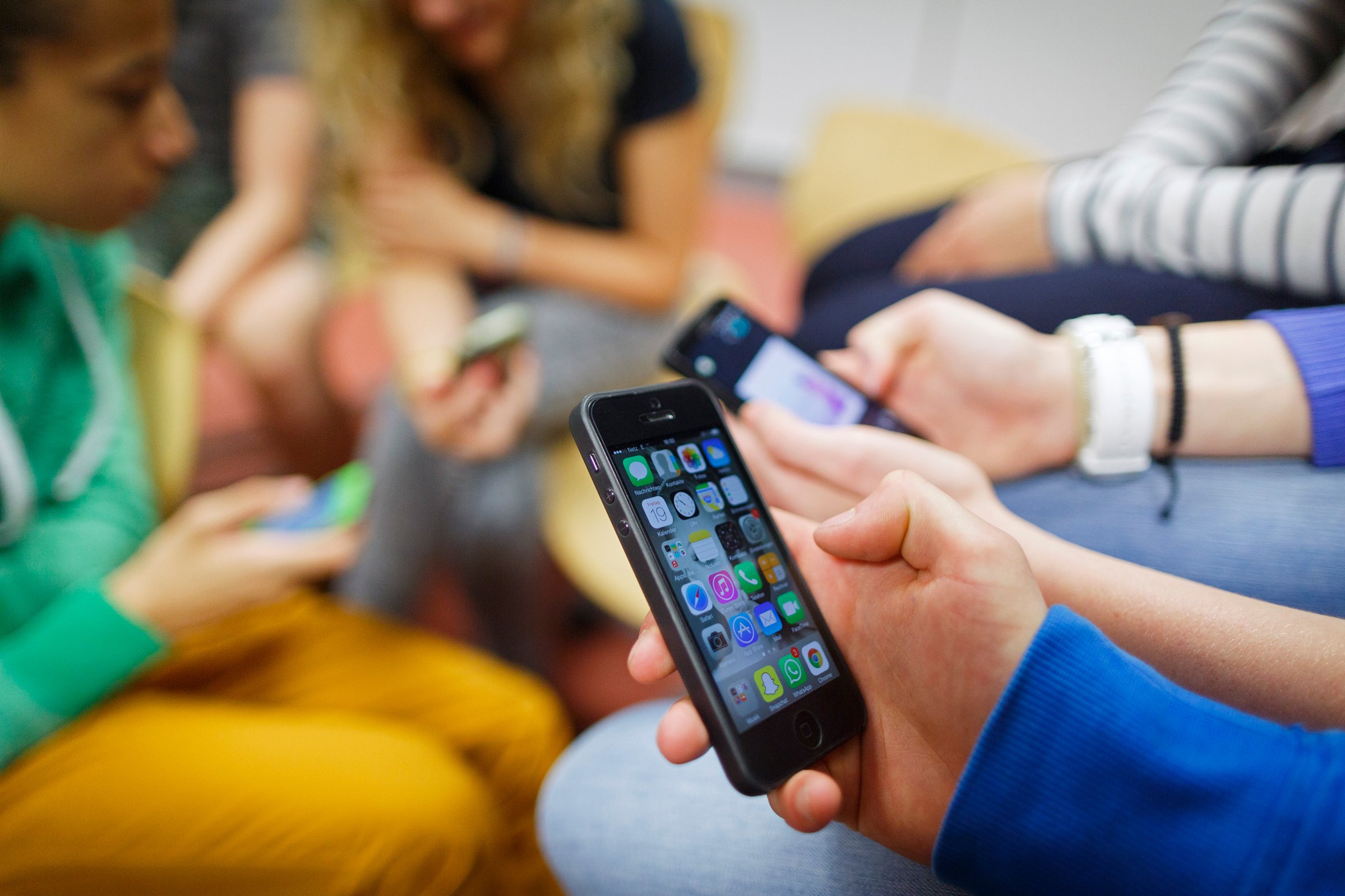
When I talk to parents about my research on teens and technology, their questions often boil down to this: Is it bad for my teen to be spending so much time on electronic devices? Recently, several analyses have said that the research on this front is a mess or that there is no connection to mental health. Don’t believe them.
In fact, four large studies of teens from the U.S. and U.K. all show the same thing: happiness and mental health are highest at a half-hour to two hours of extracurricular digital media use a day; well-being then steadily decreases, with those who spend the most time online being the worst off. Twice as many heavy users of electronic devices are unhappy, depressed or distressed as light users.
So why the confusion? The articles concluding the research is a wash share one thing: they present the results using an obscure statistic called “percent variance explained,” which measures how much a single factor can explain differences in outcomes across a population, compared with the effects of all other possible factors.
Often, this minimizes the association between a factor and an outcome — especially an uncommon outcome. In the original Salk trials, the polio vaccine explained a tiny 0.0001% of the variance in whether children got polio, but unvaccinated children were over three times as likely to get polio as vaccinated children. A major league baseball player’s skill has been found to explain less than 1% of the variance in the outcome of an at-bat. Similarly, electronic-device use explains only 0.5% to 2% of the variance in suicide attempts, but twice as many teens who use devices five or more hours a day have attempted suicide as those who do so for one hour.
And in the real world, percent variance is irrelevant — parents are not keeping a tally of how much of their kid’s happiness is linked to technology use compared with uncontrollable factors like genetics and past trauma. Instead, they want to know whether too much tech time is linked to depression, and all of the large studies show this is true.
Whether heavy digital media use causes depression or unhappiness is less clear; several studies suggest that it might, but more experiments are needed in order to say for sure. However, this doesn’t mean we should do nothing. Had public-health advocates waited for absolute experimental proof that cigarettes caused lung cancer, they might still be waiting to take action.
The relationship between technology use and well-being is even more important in light of the increasing amount of evidence that teens are suffering. From 2009 to 2017, rates of depression among those ages 14 to 17 in the U.S. jumped more than 60%, and emergency-room visits for self-harm and suicidal thoughts in this age group also increased sharply. According to the CDC, suicide rates among teen girls are at 40-year highs. While it is challenging to determine the causes of these trends, it is difficult to think of another cultural change that has had as substantial an impact on the day-to-day lives of the largest number of teens as smartphones and digital media have.
Had public-health advocates waited for absolute experimental proof that cigarettes caused lung cancer, they might still be waiting to take action.
So, what is a parent to do? As a Gen X parent myself, I am aware of our status as digital-parenting pioneers. We worry about our kids’ technology use, but we also worry about standing in the way of progress.
The good news is the solutions are fairly straightforward. These are the rules I follow for myself and my three kids.
First, no phones or tablets in the bedroom at night. If you use your phone as an alarm clock, buy an actual alarm clock. (If you must use a tablet, turn all notifications off.)
Second, no using devices within an hour of bedtime. Just about everything we do on them is psychologically stimulating, and their blue light can disturb sleep. Not getting enough sleep is a major risk factor for depression.
Third, limit device time to less than two hours of leisure time a day. Homework and work involving devices don’t count; the studies thus far don’t examine them.
Think of this in terms of risks vs. benefits. What is the harm in limiting (not eliminating) the use of electronic devices? Very little. What is the harm in doing nothing, if a lot of time on devices might be behind the sharp rise in teen depression? Too much.
More Must-Reads from TIME
- Why Biden Dropped Out
- Ukraine’s Plan to Survive Trump
- The Rise of a New Kind of Parenting Guru
- The Chaos and Commotion of the RNC in Photos
- Why We All Have a Stake in Twisters’ Success
- 8 Eating Habits That Actually Improve Your Sleep
- Welcome to the Noah Lyles Olympics
- Get Our Paris Olympics Newsletter in Your Inbox
Contact us at letters@time.com